Is architecture dead? Not if these concrete cows have anything to do with it
June 17, 2014 -- Updated 0941 GMT (1741 HKT)
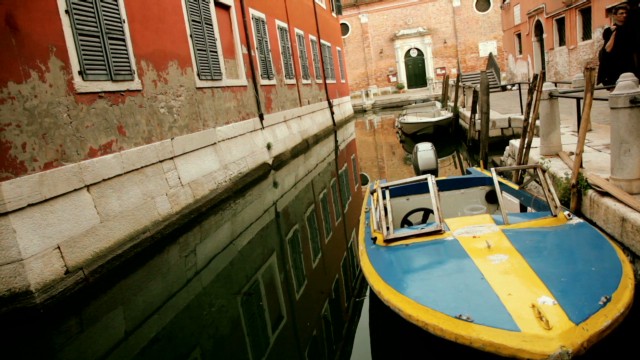 |
'This is not a fair': Inside the Venice Biennale |
The question is: what do
these rock-solid ungulates have to do with the future of architecture?
The answer: more than you imagine.
The setting is Venice. I'm here for the 14th Architecture Biennale,
directed on this occasion by Rem Koolhaas -- the Dutch, Pritzker
prize-winning powerhouse who, over 40 years, has built notable
structures everywhere from Texas to Taipei. This, while maintaining a
side-line in serious academia, publishing, journalism and, for good
measure, a place on Time magazine's list of the world's 100 most influential people.
We meet under dappled light in a quiet corner of the Giardini
-- a sloping, lovingly tended park, split by a canal and dotted with
"national pavilions" -- miniature exhibition spaces built by each
participating country at various intervals since 1893.
Sat in a fresh white
shirt without so much as a bead of sweat on his tanned, furrow-less
brow, Koolhaas appears remarkably calm for a man who's just spent the
last four years managing this colossal undertaking, often referred to as
the "Olympics of Architecture."
At the Biennale you end up with a global tour of ideas.
Rem Koolhaas, Director of the 14th Architecture Biennale
Rem Koolhaas, Director of the 14th Architecture Biennale
"What's unique about the
Biennale is that it's based around these national pavilions... so you
end up with a global tour of ideas," he says.
There are 65 contributing
nations this year -- a jump from 55 in 2012 -- including a refreshing
dose of non-western first-timers like Mozambique, the Dominican Republic
and Morocco. But what are they showing, exactly?
First timer's Morocco show 'Fundamental(ism)s'
Courtesy Andrea Avezzù/la Biennale di Venezia
"Architecture should be
open to everything. My whole life has been dedicated to expanding the
boundaries of architecture - never considering it a single entity ...
Events like the Biennale help to open new possibilities precisely by
showing us something other than buildings alone," explains Koolhaas,
whose slim, long physique is at odds with the weighty seriousness of his
character.
Events like the Biennale show us something other than buildings.
Rem Koolhaas, Director of the 14th Architecture Biennale
Rem Koolhaas, Director of the 14th Architecture Biennale
This brings us back to
those concrete cows. Guarding the entrance to the neoclassic British
pavilion, like quaint, toothless lions, the cows are on loan from Milton
Keynes -- the last of the post-war British New Towns -- where they've
been serving as unofficial mascots since the mid-70s.
They're the opening
gambit of an exhibition that includes a poem by William Blake, a portion
of a David Hockney painting and snippets from Stanley Kubrick's A
Clockwork Orange; much of it infused around electric indigo depictions
of the UK's most iconic housing estates.
For a sentimental Brit
like me, it's an exhilarating kaleidoscope of cultural reference points.
To echo Koolhaas, it's also a bold reminder that architecture is -- or
at least should be - about a great deal more than blueprints, digital
renderings and scale models.
"A Clockwork Jerusalem" commissioned by the British Council
Courtesy Andrea Avezzù/la Biennale di Venezia
"We must accept that it's part of a broader culture," says Dutch architectural historian Wouter Vanstiphout, who co-curated the exhibit alongside British architect Sam Jacob.
The pair contend that
culture -- from the romantic traditions of the late 19th century, to the
sci-fi visions and imagined utopias popular right through the 20th --
has had a significant influence on British architecture over the last
100 years.
These images and ideas have shaped the way we live.
Sam Jacob, British architect
Sam Jacob, British architect
"These images and ideas
have shaped the way we live. So what we've really made is an argument --
an argument that the world is something you can change with a fired-up
imagination," says Jacob, in what for a moment feels like a rousing
call-to-arms.
Like all the national
pavilions, the British exhibit is a response to a specific theme, set by
Koolhaas, titled "Absorbing Modernity, 1914-2014."
Explaining the idea
behind this theme, Koolhaas argues (in fact, he tells me it's more of a
"provocation") that modern forces -- particularly those of globalism and
advancing technology -- have led to a uniform "international"
architecture (glass towers, square blocks and so on) at the expense of
more distinctive, traditional styles worldwide.
And so it is that as you
stroll from pavilion to pavilion, you encounter all manner of colorful
explorations riffing on this idea -- mostly characterized, in fact, by
each nation's attempt to show how they are the exception to the rule.
Romania. Site Under Construction
Courtesy Andrea Avezzù/la Biennale di Venezia
Outside the Romanian
pavilion, for instance, a small plantation of old-fashioned alarm clocks
stand like black sunflowers on long, rigid stalks. It's an eerily
surreal reference to factory life, the clockwork operations of workers,
and a precursor to an exploration of the factory as the distinguishing
symbol of modernity in Romania.
Over in the Dominican
Republic, the floor is smothered in a brilliant bright, multi-colored
carpet -- conjuring a sense of the Caribbean nation's vibrant spirit. In
contrast, the thrust of the exhibit dwells on the pre-eminence of
concrete which, after the catastrophic San Zenon hurricane of 1930, was
obligatory for all new construction.
First timer's Dominican Republic show "Fair Concrete/La Feria Concreta"
Courtesy Andrea Avezzù/la Biennale di Venezia
In this sense, a natural disaster thrust a new mode of architecture onto the island. The result, claim curators Laboratorio de Arquitectura Dominicana, was a distinctive form of modernism -- adapted to the tropical climate with a healthy twist of Dominican flair.
Inside the German
pavilion there's a full-size partial replica of the Kanzlerbungalow
(Chancellor's Bungalow) in Bonn -- built by architect Sep Ruf in 1964.
The Kanzlerbungalow was ubiquitous in the West German media during the
tenure of the Bonn Republic, and functioned as the "nation's living
room."
Bungalow Germania
Courtesy Andrea Avezzù/la Biennale di Venezia
Its airy,
forward-looking 60s modernism is worlds apart from the formal grandeur
of the pavilion itself, which was built during the era of the German
Reich.
The result is not only a
visceral dialogue between two generations of German architectural
history, but a statement about the role of politics in shaping the
country's national style.
Trade fairs are the ultimate symbol of modernity.
Anton Kalgaev, co-curator of the Russian Pavillion
Anton Kalgaev, co-curator of the Russian Pavillion
A hop, skip and jump and
we're in the Russian pavilion -- where the curators have turned the
ornate building into a spoof international trade fair. In a playful,
tongue-in-cheek turn, 20 fictional companies have set up shop across
rows of mock sales stands -- most with a dedicated agent -- offering
commercial, distinctly Russian-themed solutions to the problems of
contemporary architecture.
A man from "Estetika
Ltd" tries to sell me some ornamental gold decorations -- with an
unmistakably Russian diagonal lattice shape - to fix on the front of my
building, making it "instantly Russian." Nearby there's "PrefabCorp" - a
hypothetical merger of all existing Russian prefabricated housing
suppliers, and "Ark-Stroy" -- a booth selling above-ground bunkers based
on Russian social housing blocks, designed for post-apocalyptic living.
Fair Enough: Russia's past our Present
Courtesy Andrea Avezzù/la Biennale di Venezia
"Trade fairs are the
ultimate symbol of modernity" explains co-curator Anton Kalgaev, as he
guides me past a series of garish corporate logos. "They all look
exactly the same -- they operate by the most universal language you can
imagine."
There's a great sense of
theater here, and underneath is a well-considered comment on both the
state of modern architecture and the means by which new ideas are
communicated and sold. As Kalgaev says, "the advantage of using this
commercial language to display our exhibit is that it explains
complicated things in a very easy way."
The Russian pavilion is
perhaps the most direct response to Koolhaas' theme -- distilling key
aspects of the country's architectural identity into discreet elements.
By transforming them into commodities, they also show how facets of our
past must be repackaged in a commercial framework in order to survive
modernity.
Looking back to when he
first conceived the idea for this Biennale, Koolhaas says that he was
struck by how easy it was, when looking at a series of buildings from a
100 years ago, to identify them by nation.
Looking at a series of
glass towers from around the world today, he says, "Everyone would agree
that there are enormous similarities between them and that it would be
reasonably hard to identify any of these in terms of national
architecture."
If we are to succeed in
finding an antidote to the generic, then looking to our own societies
must surely be a critical first step. The Biennale succeeds because it
places people -- our history, culture and even our bodies -- at the very
heart of its thinking. It may not have all the answers, but it's
certainly asking all the right question.
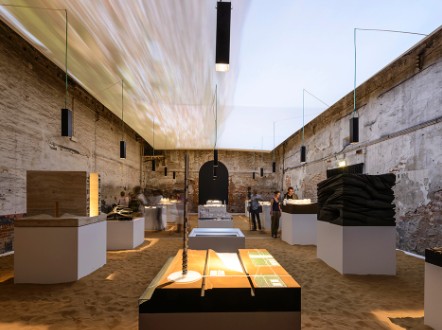
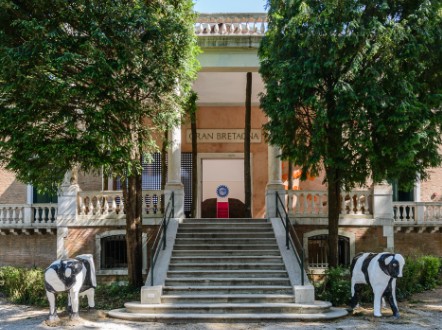

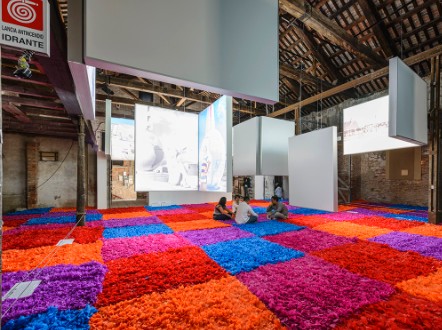
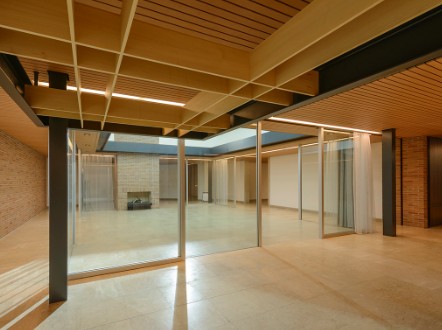
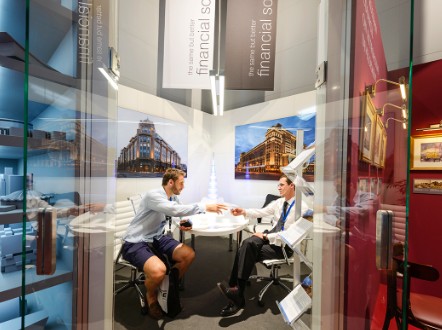
No comments:
Post a Comment